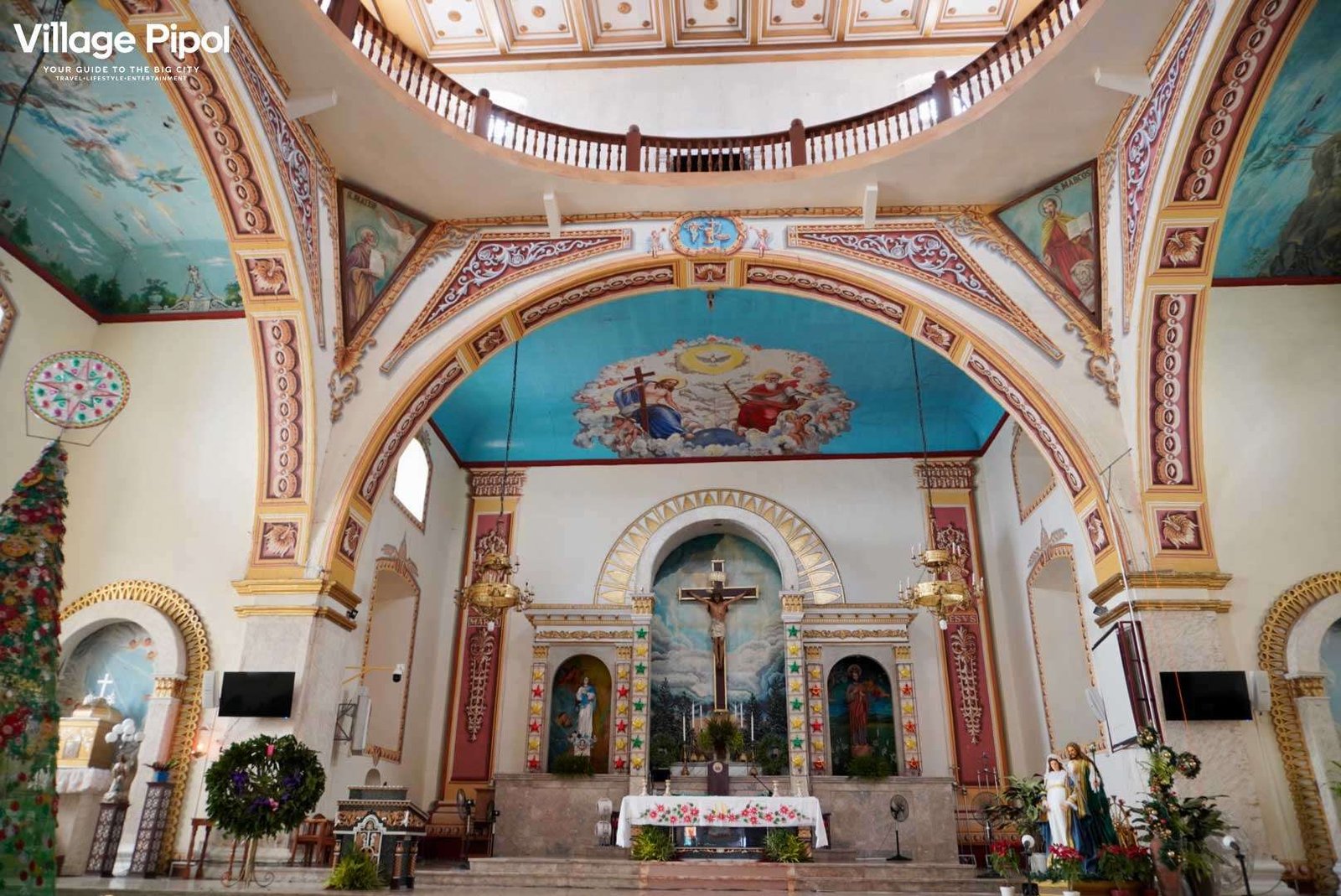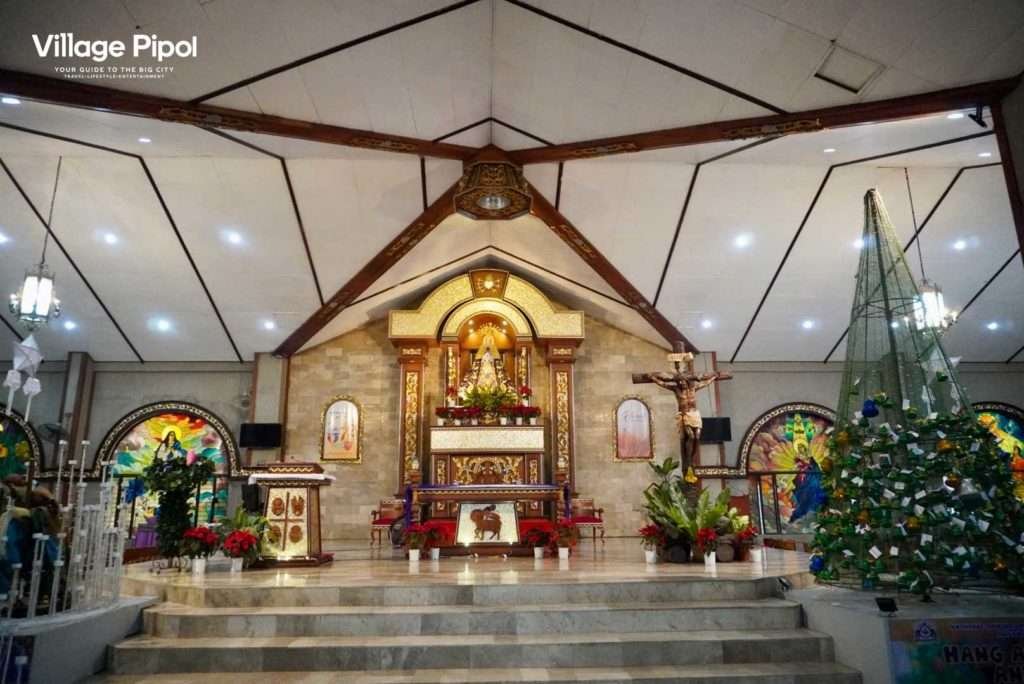The wonderfully-curated Quezon destinations with DOT-Calabarzon

The Quezon Province is dubbed The Land of the Thousand Colors. Visiting the wonderfully-curated tourist destinations proved it so. Village Pipol Magazine has been, once again, invited by the Department of Tourism’s Calabarzon office to go on a three-day familiarization tour around the Quezon Province.

The wonderfully-curated Quezon destinations with DOT-Calabarzon
Lucban | Quezon
Dubbed the Art Capital, Dance Capital, and Rice Capital of the Quezon province, Lucban is known for its annual Pahiyas Festival. This celebrates the patron saint of farmers, St. Isidore the Labourer. Aside from that, this also showcases a street of houses adorned with fruits, vegetables, agricultural products, handicrafts, and their famous edible rice-made decoration called kiping. Tourists roam the municipality and witness the decoration of houses during the week-long celebration.
Samkara Garden
Aiming to provide guests with a place where they can truly relax, meditate, and just appreciate nature and countryside living in its most basic form. Although it was raining, it truly felt peaceful as we dined in for breakfast which warmed our tummies. We also looked at one of the accommodations that they offer. Laying down on the spacious bed, your eye line rests upon a tranquil ambiance.

The town proper
We visited the St. Louis Bishop Parish in Lucban. And, just right beside it is the municipality center where we learned about Quezon’s famous tradition called Tagayan. We also took a shot of lambanog as an old-age tradition in Quezon. The tanggero pours the first shot for himself and says Na’ay po and everybody’s reply should be Pakikinabangan po. Then, the glass roams from one hand to another after pouring equal parts of lambanog and saying the same toast.

Then, we learned how about habhaban where they gave us a banana leaf filled with pansit habhab, a little bit of vinegar, and meat, and ate it with our hands. The challenge revolves around the pansit not being able to touch the tip of our noses. After that, we learned about kiping. The traditional Filipino leaf-shaped wafer is made from glutinous rice. It can be eaten grilled or fried. Aside from that, it can also be dipped in sugar, vinegar, or other sauces.

Bukid Amara
Having visited Bukid Amara before, I was definitely excited to come back. They redefine farming as they give us a peek at farmsthetic with the blooming palettes at the foot slope of Mt. Banahaw. They offer tons of activities for everybody, even kids. The bukid offers edible flowers that you can add to salads or even floral spring rolls that we learned how to wrap. Although the weather wasn’t allowing us to see the mountain, it was still an amazing experience to visit Bukid Amara.

Kamay ni Hesus
Unfortunately, we couldn’t get up the 300-step climb but it was definitely still a sight to see. Claimed to be a healing church, devotees believe that healing prayers come true in Kamay ni Hesus. After rounds of exploring Quezon, we stopped by for a little break. Having visited before, the spacious and nature-filled vicinity looked captivating. The core of it all, on the other hand, are the churches that offer some peace and reflection.
Tayabas | Quezon
Known for lambanog and sweet delicacies, Tayabas is actually at the center of the province’s long-settled heartland. It has the best lands, oldest parishes, and active commercial centers. Aside from that, it also has resorts, heritage houses, historical landmarks, and more than twenty Spanish stone bridges with under-cravings from Filipino ancestors, and nationally-important archaic stone crosses from the 16th century. It is also believed to be home to nature spirits, rest, recreation destinations, and festivities.
Juan’s Famous Buko Halo-Halo
Everything is literally made out of buko! We got a taste of seafood buko pansit. Aside from that, we also got to watch them make it right in front of our eyes. Then, they served crispy buko pie that I really really really loved which is surprising because I actually don’t eat buko pies. Like, at all. For dessert, we finally had a taste of the famous buko de halo-halo. And, to be honest, it’s definitely a must-try. So, special thanks to co-owner Fitz Shioda for the warm welcome.

Minor Basilica of St. Michael the Archangel
Also commonly known as Tayabas Basilica, the Minor Basilica of Saint Michael the Archangel is built in the shape of a key. A lot of locals actually refer to the church as Susi ng Tayabas. Established in 1578, Franciscan priests supervised the construction using bamboo, nipa, and anahaw between 1580 and 1585. The church has a 103-meter or 338-feet aisle, the longest one to have been built during the Spanish colonial era. Aside from that, the church clock was erected in early 1900 on the belfry. It’s one of the oldest and largest church clocks in Asia.

Sariaya | Quezon
Another first-class municipality, Sariaya is actually known for its pristine beach resorts and nature-trekking activities. It has more than a hundred cultural properties and ancestral houses. Aside from that, Sariaya is also considered the Heritage Town of Quezon and the Art Deco Capital of Southern Luzon. As for the name, on the other hand, the Spaniards wrote Saria on their notebooks as the name of the settlement. And while the Spaniards were talking with each other, the natives heard them utter the words Saria-ya. Hence, the words traveled from mouth to mouth and became a common saying until the two words were combined.
Francesca de Banahaw
We met up with Mrs. Cristina Diasanta-Decal who warmly welcomed us in Francesca de Banahaw. Having visited before, it was actually such a great time to be back. It has both modern and antiquated looks for accommodations.

But, during the time of our visit, we learned how to make a delicacy called sinaludsod na balinghoy. Since my paternal grandmother lives in Quezon, I have actually eaten sinaludsod na balinghoy before. And, learning how to make them definitely brought me so much joy.

Tiaong | Quezon
Another first-class municipality in Quezon, Tiaong is the Home of the Legendary Lake Ticob. The lake lies a small, clear lake, beautiful in shape like a gem set in the middle of an emerald circle. It is said that on clear days one can see the depths of this lake and distinguish four posts. Aside from that, it is also elevated and thick with foliage that steeply slopes down to the shore of the lake.
Villa Escudero
Probably the biggest place we visited during the trip, Villa Escudero allows guests to experience the allure of Philippine country life. Don Placido Escudero and his wife Dona Claudia Marasigan founded the place in the 1880s. He built the country’s first working hydroelectric plant to supply his desiccated coconut factory and Villa Escudero, which he and his wife Dona Rosario Adap built in 1929. Then, their children opened the estate to the public in 1981.

We entered Villa Escudero with a carabao cart ride. Then, we dined by the waterfall. So, if you plan on eating by the waterfalls, make sure that you either wear a pair of sandals or go barefoot. That way, you can enjoy the cold water that runs through the ground.

Aside from that, we also watched a cultural show. The Philippine Experience Show showcases the country’s rich culture that has been preserved by traditional dances and music.

We also visited the museum. Unfortunately, we aren’t allowed to take photos or videos inside. The Escudero Private Museum is one of the largest museums in the country. Various artifacts have been collected from all over the world. Despite the fact that we were not allowed to take photos, the museum still looked amazing outside due to its pink structure.

Dolores | Quezon
Located at the foot of Mount Banahaw, Dolores is a fourth-class municipality in Quezon. Dolores is located on predominantly level to undulating terrain with the majority of land having a slope grade of less than 3%. Mt. Banahaw watershed sustains water for creeks, rivers, and falls. Even rivers traverse the national park namely: Balayong, Maimpis, Liliw, Dalawitan, Malinao, Nagcarlan, and San Diego. These river systems directly provide water for domestic, irrigation, and recreational purposes of nearby municipalities.
National Shrine of Our Lady of Sorrows
Declared a national shrine last June 15, 2017, tourists and locals alike come to see, pray, and devote themselves to the Birhen Dolorosa, the patron of Overseas Filipino Workers. The town of Dolores is home to the Shrine of Our Lady of Sorrows. Its people are as zealous in keeping their heritage alive with spectacles drawing visitors both near and far.

Behind the church is a spot that depicts The Seven Sorrows of Mary. We learned a lot about the church and the sorrows from Manu Del Rosario and other guides that were present that day. The Seven Sorrows of Mary included the following:
- The Prophecy of Simeon
- The Flight to Egypt
- The Loss of the Child Jesus in the Temple
- Mary meets Jesus (The Fourth Station of the Cross)
- The Crucifixion of Jesus
- Jesus is Taken Down from the Cross
- The Burial of Jesus
All in all, the three-day familiarization tour around the Quezon Province was an enjoyable experience. And, Village Pipol Magazine would like to express our gratitude to the Department of Tourism’s Calabarzon office. We would love to specifically thank a few people — Marites T. Castro, Keneth Caoile De Gracia, and Lester San Juan Uriarte for such a wonderful end-of-year experience.
Angela Grace P. Baltan has been writing professionally since 2017. She doesn’t hesitate to be opinionated in analyzing movies and television series. Aside from that, she has an affinity for writing anything under the sun. As a writer, she uses her articles to advocate for feminism, gender equality, the LGBTQIA+ community, and mental health among others.











